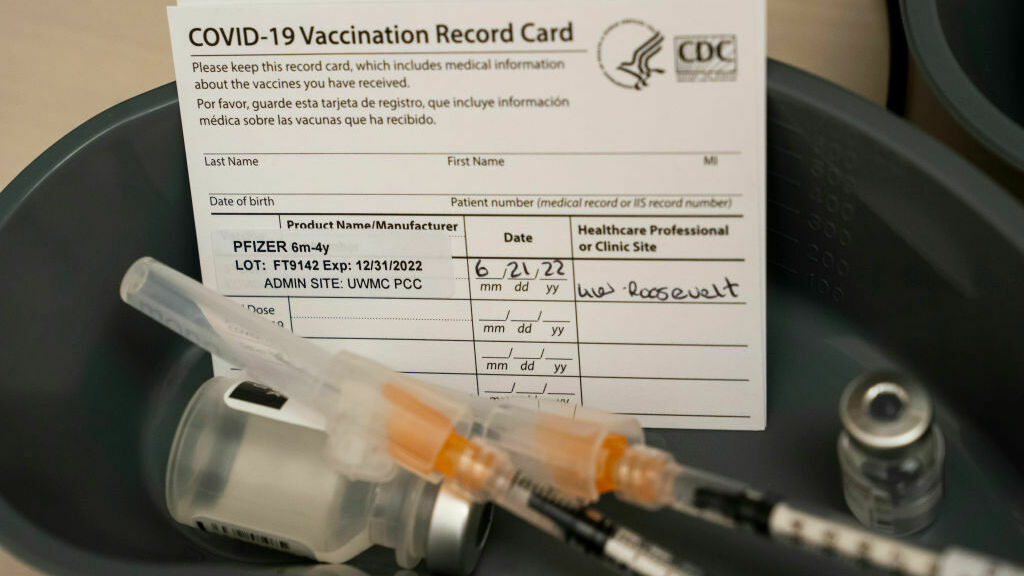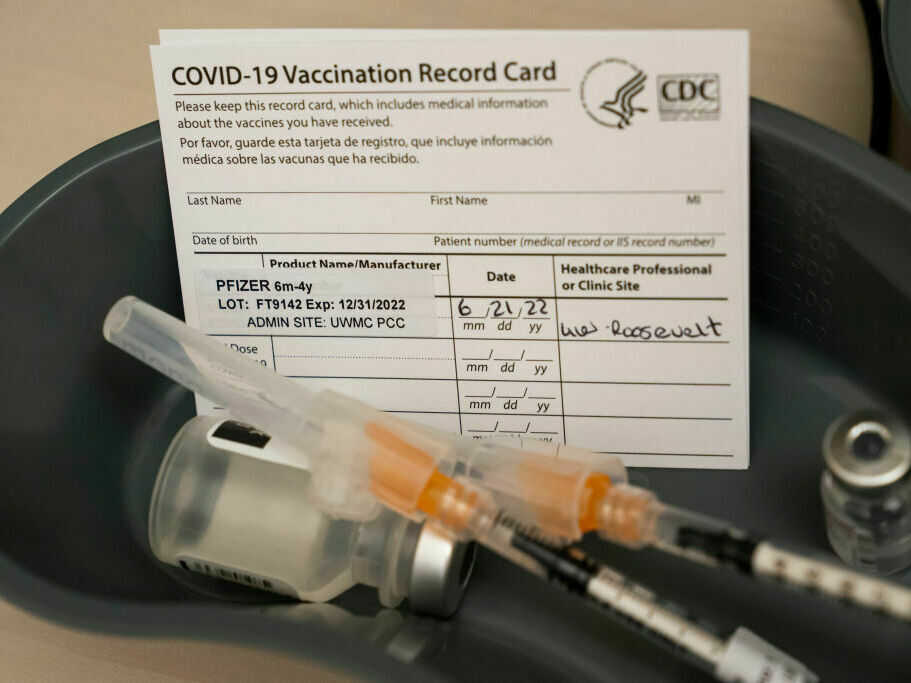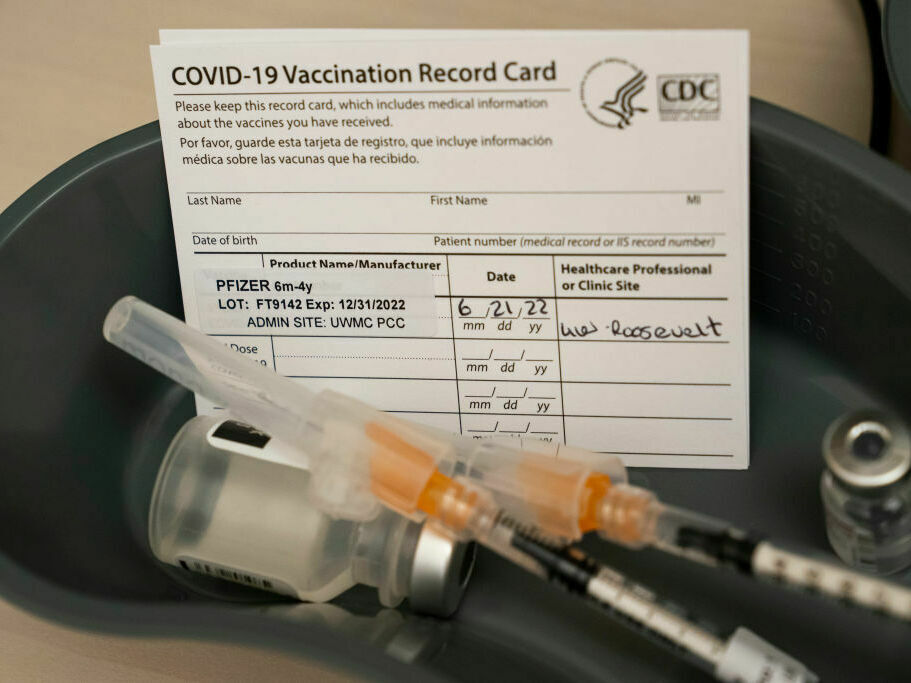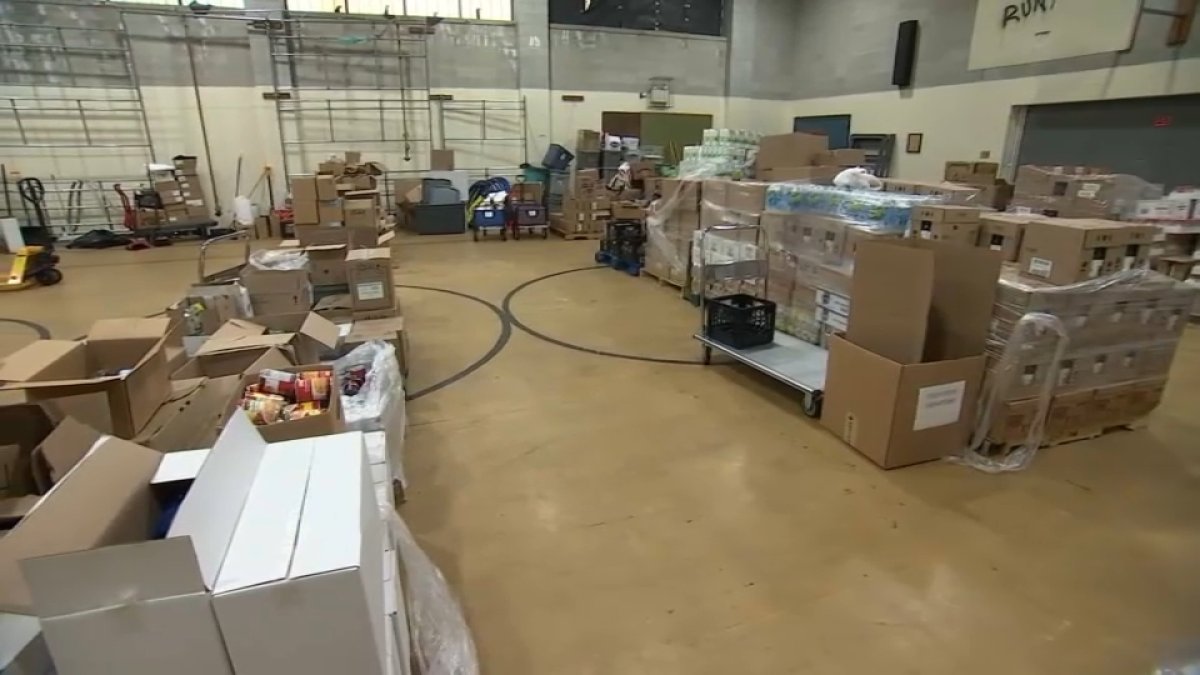

Immunity Individuals obtained by vaccination or by means of prior an infection with the SARS-CoV-2 virus may perhaps account for the lighter than envisioned COVID surge in the U.S. this winter season, scientists say.
David Ryder/Getty Pictures
disguise caption
toggle caption
David Ryder/Getty Illustrations or photos

Immunity People obtained by vaccination or by using prior an infection with the SARS-CoV-2 virus may perhaps account for the lighter than predicted COVID surge in the U.S. this winter season, researchers say.
David Ryder/Getty Photos
This winter’s COVID-19 surge in the U.S. appears to be fading devoid of hitting just about as tough as a lot of had feared.
“I feel the worst of the winter resurgence is more than,” suggests Dr. David Rubin, who’s been tracking the pandemic at the PolicyLab at Children’s Medical center of Philadelphia.
No a single envisioned this winter’s surge to be as bad as the final two. But the two the flu and RSV arrived roaring back really early this tumble. At the identical time, the most contagious omicron subvariant however took off just as the vacations arrived in late 2022. And most folks were being performing like the pandemic was more than, which permitted all a few viruses to distribute immediately.
So there had been massive fears of hospitals obtaining absolutely overcome again, with several folks getting critically sick and dying.
But that is not what took place.

“This virus continues to toss 210-mile-for each-hour curve balls at us. And it appears to be to defy gravity or logic at times,” says Michael Osterholm, who heads the Middle for Infectious Ailment Analysis and Plan at the College of Minnesota.
“Individuals all assumed we would see important transmission. Nicely, every time we think we have some purpose to imagine we know what it really is likely to do, it doesn’t do that,” Osterholm claims.
‘The worst’ of the surge of COVID, flu and RSV could be around
Bacterial infections, hospitalizations and fatalities did boost in the U.S. just after New Year’s. But the number of individuals catching the virus and finding hospitalized and dying from COVID quickly commenced to fall once again and have all been dropping now for weeks, in accordance to the hottest information from the Facilities for Disease Handle and Prevention.
The tumble flu and RSV waves carry on to fade way too. And so the worst appears to be like like it is really possibly above, many public health and fitness authorities say.
“I’m glad to say that we did not have as a lot of a crush of infections as numerous assumed was probable, which is quite welcome information,” states Jennifer Nuzzo, who heads the Pandemic Center at Brown College.
The major issue is: Why? A number of factors may have performed a purpose.
1 possibility could be that persons prevented crowds, wore a mask and took other safeguards much more than community overall health industry experts had envisioned they would. But that would not truly seem to be the scenario.
May possibly ‘viral interference’ engage in a position?
An additional risk is “viral interference,” which is a concept that in some cases when a particular person gets infected with one virus, their immune reaction may possibly defend them from finding infected with another virus. So perhaps RSV and flu crowded out COVID in the same way COVID crowded out those people other viral bacterial infections at different periods over the very last two several years.
“At this place, I think which is a lot more of a guess relatively than very reliable evidence,” Nuzzo claims. “But if it truly is true, that may well signify we could possibly be additional prone to observing a rise in bacterial infections when people viruses are not about.”
Nuzzo and other specialists suspect in its place that the key cause the COVID surge is ebbing is all the immunity we have all crafted up from prior infections, and/or the COVID vaccinations lots of of us have been given.
“We have what I would get in touch with now a far better immunity barrier,” says Dr. Carlos Del Rio, an infectious disorder professional at Emory University who heads the Infectious Condition Society of America.
“Concerning vaccinations and prior an infection I think all of us are in a different put than we were being before,” he states. “All of us, if not thoroughly guarded, we are relatively far better secured. And that immunologic wall is true.”
Why COVID-19 stays a important risk
But none of this implies the region won’t have to fret about COVID any more. Much more than 400 persons are however dying each and every working day from COVID-19. Which is far much less than the 1000’s who died throughout the darkest times of the past two winter surges. But it truly is still lots of additional men and women than die from the flu each and every working day, for example.
“Make no blunder: COVID-19 stays a important public overall health threat,” Nuzzo claims. “That has not changed. And the simple fact that we are nonetheless dropping hundreds of persons a working day to this virus is deeply troubling. So we shouldn’t have to acknowledge that level of illness and loss of life that we are seeing.”

William Hanage, an epidemiologist at the Harvard T.H. Chan School of Community Health, agrees.
“It is really past dilemma that modern society has moved into a phase in which the pandemic is for most of us if not above then unquestionably tranquil. And which is a excellent point. Extended could it keep on being so,” Hanage states. “Is it the circumstance that there is no preventable struggling? No. There is continue to preventable struggling and loss of life.”
Most of the individuals dying are aged, quite a few of whom have not been given the hottest booster against COVID-19. So having them boosted could help a whole lot. And the immunity the rest of us have constructed up could keep fading. That indicates quite a few of the rest of us may perhaps at some level have to have to get a different booster to assist more cut down the risk from COVID.
A different wave of flu could nevertheless hit this year, public wellness industry experts be aware, and the chance carries on that nevertheless an additional new, even much more risky variant of SARS-CoV-2 could emerge.
“This virus isn’t really accomplished with us but,” Osterholm says.





